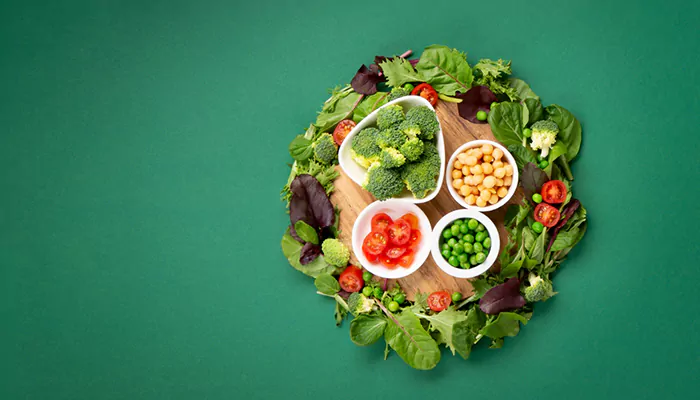World Earth Day: Can We Eat Our Way to a Healthier Planet? The Rise of Climate-Friendly Diets
- Devyani
- 7 months ago
- 4 minutes read

What if the secret to saving the planet was on your plate? This World Earth Day, let’s dig into how climate-friendly diets are shaping a healthier future—one bite at a time.
Every year, World Earth Day reminds us to pause and think about the planet we call home. But while we often focus on recycling, reducing plastic, or cutting emissions, there’s another powerful tool in our hands—our food choices.
Turns out, what we eat doesn’t just affect our waistlines; it impacts the planet too. So, can we really eat our way to a healthier Earth? Let’s break it down.
The Food-Climate Connection: Why What We Eat Matters
You might not think about it while biting into a burger or scooping up avocado toast, but food production is a major player in climate change. Here’s the scoop:
- Agriculture contributes nearly 25% of global greenhouse gas emissions—that’s more than all the world’s cars, planes, and trains combined!
- Livestock farming (especially beef and lamb) is a big culprit, producing methane, a gas that’s way more potent than CO₂.
- Deforestation for farmland (like clearing the Amazon for cattle or soy) wipes out carbon-absorbing trees.
- Food waste is another villain—if food waste were a country, it’d be the third-largest emitter after the U.S. and China!
Yikes, right? But here’s the good news: changing how we eat can make a real difference.
What Exactly Is a Climate-Friendly Diet?
A climate-friendly diet is all about choosing foods that are kinder to the planet—without giving up deliciousness. Here’s what’s on the menu:
Plant-Powered Plates

Plants generally have a much smaller carbon footprint than animal products. Swapping even a few meat-based meals for plant-based ones can cut your food-related emissions by up to 50%.
- Beans, lentils, and chickpeas are protein-packed and planet-friendly.
- Whole grains like quinoa, oats, and brown rice are sustainable staples.
- Nuts and seeds (like almonds, chia, and flax) are nutrient-dense and low-impact.
Seasonal & Local = Superhero Status
Shipping food across the globe burns fossil fuels. Eating seasonal and local cuts down on "food miles."
- Hit up farmers’ markets—fresh, local produce tastes better too!
- Frozen fruits and veggies are a great backup (they’re often flash-frozen at peak freshness).
Fight Food Waste Like a Pro
About one-third of all food produced gets wasted. Here’s how to stop it:
- Plan meals so you buy only what you need.
- Store food properly (hello, airtight containers!).
- Get creative with leftovers—stale bread = croutons, wilted veggies = soup!
But… Is This Really Doable?
We get it—completely overhauling your diet sounds overwhelming. But here’s the thing: you don’t have to be perfect. Even small tweaks help.
- Start with one swap (like oat milk instead of dairy).
- Try a new plant-based recipe each week.
- Celebrate progress, not perfection—every bite counts!
And guess what? Climate-friendly eating can be delicious. Ever had a creamy avocado chocolate mousse or a hearty lentil curry? Yeah, the planet (and your taste buds) win.
The Bigger Picture: Why This Matters
Food is personal, cultural, and emotional—we’re not here to judge your pizza love. But if we all make small, sustainable shifts, the collective impact is huge.
- Healthier planet = fewer extreme weather events, cleaner air, and thriving ecosystems.
- Healthier you = plant-based diets are linked to lower risks of heart disease, diabetes, and obesity.
- Fairer food systems = supporting local farmers and ethical practices.
This World Earth Day, let’s remember: food isn’t just fuel—it’s a choice that shapes the future. You don’t have to go full eco-warrior overnight. Just eat a little greener, waste a little less, and enjoy the journey.
After all, saving the planet might just be the most delicious thing we’ve ever done.













